在实战中学习Springboot+Security+redis+jwt的登录流程
一、环境准备
- vm+ubuntu/centos(win环境下也行)
- docker + redis(自行百度)+Redis Desktop Manager
- idea
二、初始化项目
我们在Spring Initializr中初始化
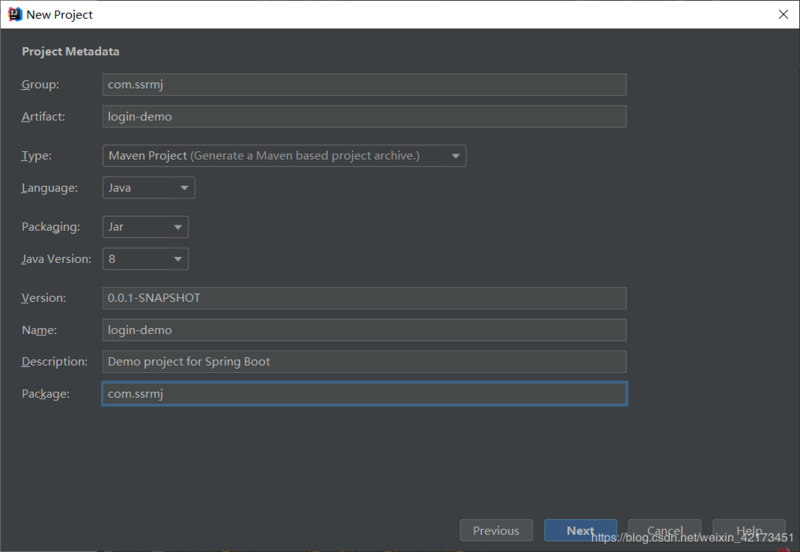
勾选Spring Web和Spring Security
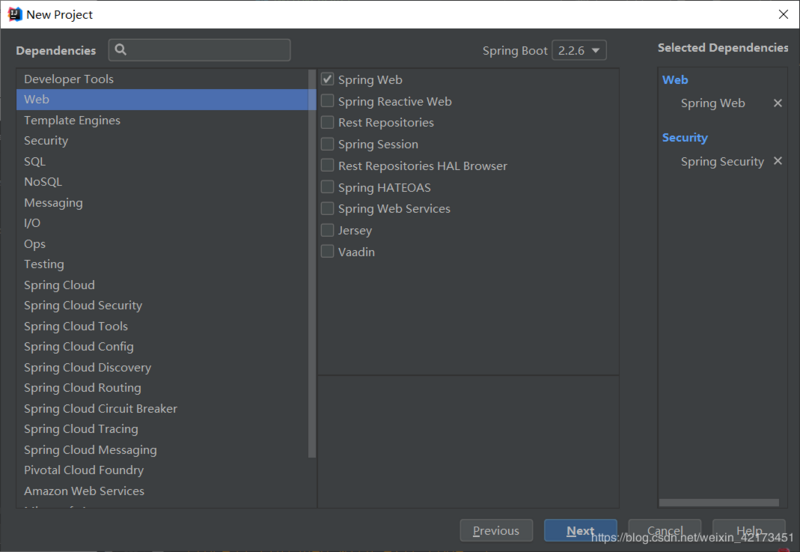
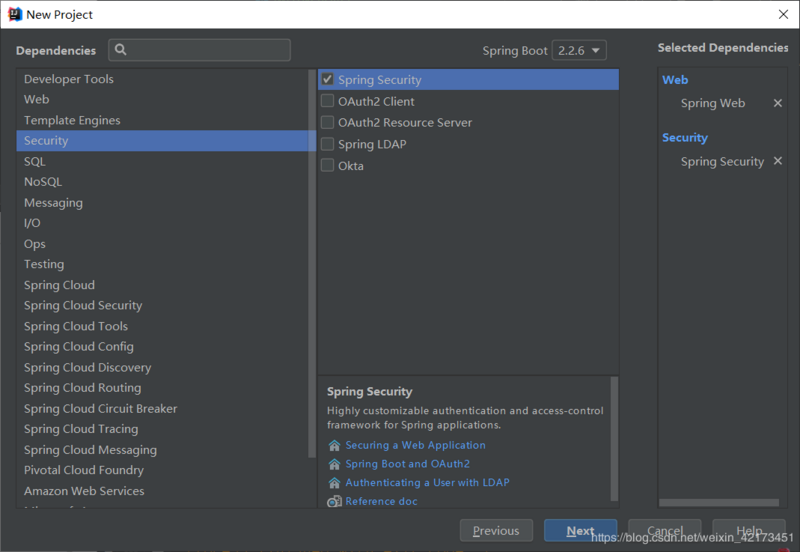
(一)pom.xml
<?xml version="1.0" encoding="UTF-8"?>
<project xmlns="http://maven.apache.org/POM/4.0.0" xmlns:xsi="http://www.w3.org/2001/XMLSchema-instance"
xsi:schemaLocation="http://maven.apache.org/POM/4.0.0 https://maven.apache.org/xsd/maven-4.0.0.xsd">
<modelVersion>4.0.0</modelVersion>
<parent>
<groupId>org.springframework.boot</groupId>
<artifactId>spring-boot-starter-parent</artifactId>
<version>2.2.6.RELEASE</version>
<relativePath/> <!-- lookup parent from repository -->
</parent>
<groupId>com.ssrmj</groupId>
<artifactId>login-demo</artifactId>
<version>0.0.1-SNAPSHOT</version>
<name>login-demo</name>
<description>Demo project for Spring Boot</description>
<properties>
<java.version>1.8</java.version>
</properties>
<dependencies>
<dependency>
<groupId>org.springframework.boot</groupId>
<artifactId>spring-boot-starter-web</artifactId>
</dependency>
<!-- spring-security -->
<dependency>
<groupId>org.springframework.boot</groupId>
<artifactId>spring-boot-starter-security</artifactId>
</dependency>
<!-- redis 操作依赖 -->
<dependency>
<groupId>org.springframework.boot</groupId>
<artifactId>spring-boot-starter-data-redis</artifactId>
</dependency>
<!-- jwt -->
<dependency>
<groupId>io.jsonwebtoken</groupId>
<artifactId>jjwt</artifactId>
<version>0.6.0</version>
</dependency>
<!-- lombok -->
<dependency>
<groupId>org.projectlombok</groupId>
<artifactId>lombok</artifactId>
<optional>true</optional>
</dependency>
<dependency>
<groupId>org.springframework.boot</groupId>
<artifactId>spring-boot-starter-test</artifactId>
<scope>test</scope>
<exclusions>
<exclusion>
<groupId>org.junit.vintage</groupId>
<artifactId>junit-vintage-engine</artifactId>
</exclusion>
</exclusions>
</dependency>
<dependency>
<groupId>org.springframework.security</groupId>
<artifactId>spring-security-test</artifactId>
<scope>test</scope>
</dependency>
</dependencies>
<build>
<plugins>
<plugin>
<groupId>org.springframework.boot</groupId>
<artifactId>spring-boot-maven-plugin</artifactId>
</plugin>
</plugins>
</build>
</project>
(二)yml配置
spring:
mvc:
throw-exception-if-no-handler-found: true
resources:
add-mappings: false
###Redis
redis:
host: linux的ip
port: 6379
timeout: 2000ms
password: redis密码 #密码
jedis:
pool:
max-active: 10
max-idle: 8
min-idle: 2
max-wait: 1000ms
logging:
level:
org.springframework.security: info
root: info
path: e:/log/login-demo-log
### jwt
jwt:
###过期时间 单位s
time: 1800
###安全密钥
secret: "BlogSecret"
###token前缀
prefix: "Bearer "
###http头key
header: "Authorization"
(三)项目结构
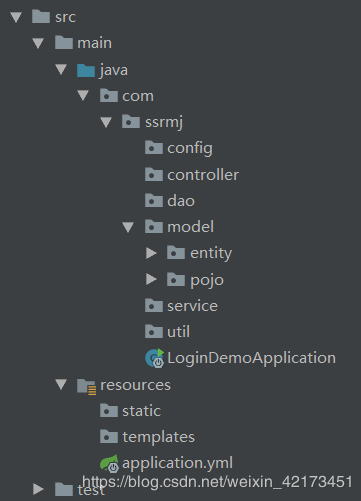
(四)model层
注:setter、getter和toString采用lombok
entity.Result(返回结果实体类)
package com.ssrmj.model.entity;
import com.fasterxml.jackson.annotation.JsonInclude;
import lombok.Data;
import lombok.ToString;
/**
* @Description: 返回结果实体类
* @Author: Mt.Li
*/
@JsonInclude(JsonInclude.Include.NON_NULL)
@Data
@ToString
public class Result {
private Integer code; // 返回状态码
private String message; // 返回信息
private Object data; // 返回数据
private Result(){
}
public Result(Integer code, String message) {
super();
this.code = code;
this.message = message;
}
public Result(Integer code, String message, Object data) {
super();
this.code = code;
this.message = message;
this.data = data;
}
public static Result create(Integer code, String message){
return new Result(code,message);
}
public static Result create(Integer code, String message, Object data){
return new Result(code,message,data);
}
}
entity.StatusCode(自定义状态码)
package com.ssrmj.model.entity;
/**
* 自定义状态码
*/
public class StatusCode {
// 操作成功
public static final int OK = 200;
// 失败
public static final int ERROR = 201;
// 用户名或密码错误
public static final int LOGINERROR = 202;
// token过期
public static final int TOKENEXPIREE = 203;
// 权限不足
public static final int ACCESSERROR = 403;
// 远程调用失败
public static final int REMOTEERROR = 204;
// 重复操作
public static final int REPERROR = 205;
// 业务层错误
public static final int SERVICEERROR = 500;
// 资源不存在
public static final int NOTFOUND = 404;
}
pojo.Role(角色)
package com.ssrmj.model.pojo;
import lombok.Data;
import lombok.ToString;
/**
* @Description: 角色
* @Author: Mt.Li
*/
@Data
@ToString
public class Role {
private Integer id;//角色id
private String name;//角色名
}
pojo.User(用户)
package com.ssrmj.model.pojo;
import com.fasterxml.jackson.annotation.JsonIgnore;
import lombok.Data;
import lombok.ToString;
import java.io.Serializable;
import java.util.List;
/**
* @Description: 用户
* @Author: Mt.Li
*/
@Data
@ToString
public class User implements Serializable {
// 自动生成的serialVersionUID
private static final long serialVersionUID = 7015283901517310682L;
private Integer id;
private String name;
private String password;
// 用户状态,0-封禁,1-正常
private Integer state;
@JsonIgnore
private List<Role> roles;
}
注:代码中自动生成的serialVersionUID
(五)config
1、BeanConfig(将一些不方便加@Component注解的类放在此处)
什么意思呢,就是有的类我们用@Autowired注入的时候,spring不能识别,于是在这里写成方法注入容器
package com.ssrmj.config;
import com.fasterxml.jackson.annotation.JsonInclude;
import com.fasterxml.jackson.databind.ObjectMapper;
import org.springframework.context.annotation.Bean;
import org.springframework.security.crypto.bcrypt.BCryptPasswordEncoder;
import org.springframework.stereotype.Component;
/**
* 将一些不方便加@Component注解的类放在此处加入spring容器
*/
@Component
public class BeanConfig {
/**
* spring-security加密方法
*/
@Bean
public BCryptPasswordEncoder encoder() {
return new BCryptPasswordEncoder();
}
/**
* spring-boot内置的json工具
*/
@Bean
public ObjectMapper objectMapper() {
return new ObjectMapper().setSerializationInclusion(JsonInclude.Include.NON_NULL);
}
}
2、JwtConfig(Jwt配置类,将yml中的配置引入)
package com.ssrmj.config;
import org.springframework.boot.context.properties.ConfigurationProperties;
import org.springframework.stereotype.Component;
@ConfigurationProperties(prefix = "jwt")
@Component
public class JwtConfig {
public static final String REDIS_TOKEN_KEY_PREFIX = "TOKEN_";
private long time; // 过期时间
private String secret; // JWT密码
private String prefix; // Token前缀
private String header; // 存放Token的Header Key
public long getTime() {
return time;
}
public void setTime(long time) {
this.time = time;
}
public String getSecret() {
return secret;
}
public void setSecret(String secret) {
this.secret = secret;
}
public String getPrefix() {
return prefix;
}
public void setPrefix(String prefix) {
this.prefix = prefix;
}
public String getHeader() {
return header;
}
public void setHeader(String header) {
this.header = header;
}
}
3、WebSecurityConfig(Security拦截配置)
package com.ssrmj.config;
import org.springframework.context.annotation.Configuration;
import org.springframework.http.HttpMethod;
import org.springframework.security.config.annotation.method.configuration.EnableGlobalMethodSecurity;
import org.springframework.security.config.annotation.web.builders.HttpSecurity;
import org.springframework.security.config.annotation.web.configuration.EnableWebSecurity;
import org.springframework.security.config.annotation.web.configuration.WebSecurityConfigurerAdapter;
import org.springframework.security.config.http.SessionCreationPolicy;
/**
* @Description:
* @Author: Mt.Li
*/
@Configuration
@EnableWebSecurity
@EnableGlobalMethodSecurity(prePostEnabled = true) // 开启Spring方法级安全,开启前置注解,同样也是开启了Security注解模式
public class WebSecurityConfig extends WebSecurityConfigurerAdapter {
@Override
protected void configure(HttpSecurity httpSecurity) throws Exception {
//禁用csrf
//options全部放行
//post 放行
httpSecurity.csrf().disable()
.sessionManagement().sessionCreationPolicy(SessionCreationPolicy.STATELESS).and()
.authorizeRequests()
.antMatchers(HttpMethod.OPTIONS, "/**").permitAll()
.antMatchers(HttpMethod.POST).permitAll() // 为了方便测试,放行post
.antMatchers(HttpMethod.PUT).authenticated()
.antMatchers(HttpMethod.DELETE).authenticated()
.antMatchers(HttpMethod.GET).authenticated();
httpSecurity.headers().cacheControl();
}
}
六)util
JwtTokenUtil(关于token操作的工具类)
package com.ssrmj.util;
import com.ssrmj.config.JwtConfig;
import io.jsonwebtoken.Claims;
import io.jsonwebtoken.Jwts;
import io.jsonwebtoken.SignatureAlgorithm;
import org.springframework.beans.factory.annotation.Autowired;
import org.springframework.security.core.GrantedAuthority;
import org.springframework.security.core.userdetails.UserDetails;
import org.springframework.stereotype.Component;
import java.io.Serializable;
import java.util.*;
@Component
public class JwtTokenUtil implements Serializable {
private static final long serialVersionUID = 7965205899118624911L;
private static final String CLAIM_KEY_USERNAME = "sub";
private static final String CLAIM_KEY_CREATED = "created";
private static final String CLAIM_KEY_ROLES = "roles";
@Autowired
private JwtConfig jwtConfig;
public Date getCreatedDateFromToken(String token) {
Date created;
try {
final Claims claims = getClaimsFromToken(token);
created = new Date((Long)claims.get(CLAIM_KEY_CREATED));
} catch (Exception e) {
created = null;
}
return created;
}
/**
* 从token中获取过期时间
*/
public Date getExpirationDateFromToken(String token) {
Date expiration;
try {
final Claims claims = getClaimsFromToken(token);
expiration = claims.getExpiration();
} catch (Exception e) {
expiration = null;
}
return expiration;
}
private Claims getClaimsFromToken(String token) {
Claims claims;
try {
claims = Jwts.parser()
.setSigningKey(jwtConfig.getSecret())
.parseClaimsJws(token)
.getBody();
} catch (Exception e) {
claims = null;
}
return claims;
}
/**
* 生成过期时间 单位[ms]
*
*/
private Date generateExpirationDate() {
// 当前毫秒级时间 + yml中的time * 1000
return new Date(System.currentTimeMillis() + jwtConfig.getTime() * 1000);
}
/**
* 根据提供的用户详细信息生成token
*/
public String generateToken(UserDetails userDetails) {
Map<String, Object> claims = new HashMap<>(3);
claims.put(CLAIM_KEY_USERNAME, userDetails.getUsername()); // 放入用户名
claims.put(CLAIM_KEY_CREATED, new Date()); // 放入token生成时间
List<String> roles = new ArrayList<>();
Collection<? extends GrantedAuthority> authorities = userDetails.getAuthorities();
for (GrantedAuthority authority : authorities) { // SimpleGrantedAuthority是GrantedAuthority实现类
// GrantedAuthority包含类型为String的获取权限的getAuthority()方法
// 提取角色并放入List中
roles.add(authority.getAuthority());
}
claims.put(CLAIM_KEY_ROLES, roles); // 放入用户权限
return generateToken(claims);
}
/**
* 生成token(JWT令牌)
*/
private String generateToken(Map<String, Object> claims) {
return Jwts.builder()
.setClaims(claims)
.setExpiration(generateExpirationDate())
.signWith(SignatureAlgorithm.HS512, jwtConfig.getSecret())
.compact();
}
}
(七)dao层
结构图:
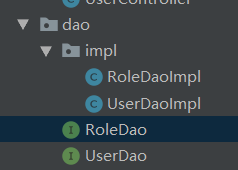
RoleDao
package com.ssrmj.dao;
import com.ssrmj.model.pojo.Role;
import org.springframework.stereotype.Repository;
import java.util.List;
@Repository
public interface RoleDao {
/**
* 根据用户id查询角色
*/
List<Role> findUserRoles(Integer id);
}
UserDao
package com.ssrmj.dao;
import com.ssrmj.model.pojo.User;
import org.springframework.stereotype.Repository;
@Repository
public interface UserDao {
/**
* 根据用户名查询用户
*/
User findUserByName(String name);
}
RoleDaoImpl
package com.ssrmj.dao.impl;
import com.ssrmj.dao.RoleDao;
import com.ssrmj.model.pojo.Role;
import org.springframework.stereotype.Service;
import java.util.ArrayList;
import java.util.List;
/**
* @Description:
* @Author: Mt.Li
*/
@Service
public class RoleDaoImpl implements RoleDao {
private List<Role> roles = new ArrayList<>();
private static Role r1 = new Role();
private static Role r2 = new Role();
@Override
public List<Role> findUserRoles(Integer id) {
if(id == 1) {
r1.setId(0);
r1.setName("ADMIN");
r2.setId(1);
r2.setName("USER");
roles.add(r1);
roles.add(r2);
return roles;
}
return null;
}
}
UserDaoImpl
package com.ssrmj.dao.impl;
import com.ssrmj.dao.UserDao;
import com.ssrmj.model.pojo.User;
import org.springframework.beans.factory.annotation.Autowired;
import org.springframework.stereotype.Service;
/**
* @Description:
* @Author: Mt.Li
*/
@Service
public class UserDaoImpl implements UserDao {
@Autowired
RoleDaoImpl roleDaoImpl;
@Override
public User findUserByName(String name) {
User user = new User();
user.setId(1);
user.setName("admin");
user.setPassword("123456");
user.setState(1);
user.setRoles(roleDaoImpl.findUserRoles(user.getId()));
return user;
}
}
(八)service
LoginService
package com.ssrmj.service;
import com.ssrmj.config.JwtConfig;
import com.ssrmj.dao.impl.RoleDaoImpl;
import com.ssrmj.dao.impl.UserDaoImpl;
import com.ssrmj.model.pojo.Role;
import com.ssrmj.model.pojo.User;
import com.ssrmj.util.JwtTokenUtil;
import org.springframework.beans.factory.annotation.Autowired;
import org.springframework.data.redis.core.RedisTemplate;
import org.springframework.security.core.GrantedAuthority;
import org.springframework.security.core.authority.SimpleGrantedAuthority;
import org.springframework.security.core.userdetails.UserDetails;
import org.springframework.security.core.userdetails.UserDetailsService;
import org.springframework.security.core.userdetails.UsernameNotFoundException;
import org.springframework.stereotype.Service;
import java.util.*;
import java.util.concurrent.TimeUnit;
/**
* @Description:
* @Author: Mt.Li
*/
@Service
public class LoginService implements UserDetailsService {
@Autowired
UserDaoImpl userDao;
@Autowired
RoleDaoImpl roleDao;
@Autowired
private RedisTemplate<String, String> redisTemplate;
@Autowired
private JwtTokenUtil jwtTokenUtil;
@Autowired
private JwtConfig jwtConfig;
public Map login(User user) throws RuntimeException{
User dbUser = this.findUserByName(user.getName());
// 用户不存在 或者 密码错误
if (dbUser == null || !dbUser.getName().equals("admin") || !dbUser.getPassword().equals("123456")) {
throw new UsernameNotFoundException("用户名或密码错误");
}
// 用户已被封禁
if (0 == dbUser.getState()) {
throw new RuntimeException("你已被封禁");
}
// 用户名 密码匹配,获取用户详细信息(包含角色Role)
final UserDetails userDetails = this.loadUserByUsername(user.getName());
// 根据用户详细信息生成token
final String token = jwtTokenUtil.generateToken(userDetails);
Collection<? extends GrantedAuthority> authorities = userDetails.getAuthorities();
List<String> roles = new ArrayList<>();
for (GrantedAuthority authority : authorities) { // SimpleGrantedAuthority是GrantedAuthority实现类
// GrantedAuthority包含类型为String的获取权限的getAuthority()方法
// 提取角色并放入List中
roles.add(authority.getAuthority());
}
Map<String, Object> map = new HashMap<>(3);
map.put("token", jwtConfig.getPrefix() + token);
map.put("name", user.getName());
map.put("roles", roles);
//将token存入redis(TOKEN_username, Bearer + token, jwt存放五天 过期时间) jwtConfig.time 单位[s]
redisTemplate.opsForValue().
set(JwtConfig.REDIS_TOKEN_KEY_PREFIX + user.getName(), jwtConfig.getPrefix() + token, jwtConfig.getTime(), TimeUnit.SECONDS);
return map;
}
/**
* 根据用户名查询用户
*/
public User findUserByName(String name) {
return userDao.findUserByName(name);
}
/**
* 根据用户名查询用户
*/
@Override
public UserDetails loadUserByUsername(String name) throws UsernameNotFoundException {
User user = userDao.findUserByName(name);
// 新建权限集合,SimpleGrantedAuthority是GrantedAuthority实现类
List<SimpleGrantedAuthority> authorities = new ArrayList<>(1);
//用于添加用户的权限。将用户权限添加到authorities
List<Role> roles = roleDao.findUserRoles(user.getId()); // 查询该用户的角色
for (Role role : roles) {
// 将role的name放入权限的集合
authorities.add(new SimpleGrantedAuthority(role.getName()));
}
return new org.springframework.security.core.userdetails.User(user.getName(), "***********", authorities);
}
}
(九)controller
UserController
package com.ssrmj.controller;
import com.ssrmj.model.entity.Result;
import com.ssrmj.model.entity.StatusCode;
import com.ssrmj.model.pojo.User;
import com.ssrmj.service.LoginService;
import org.springframework.beans.factory.annotation.Autowired;
import org.springframework.security.core.userdetails.UsernameNotFoundException;
import org.springframework.web.bind.annotation.PostMapping;
import org.springframework.web.bind.annotation.RequestMapping;
import org.springframework.web.bind.annotation.RestController;
import java.util.Map;
/**
* @Description:
* @Author: Mt.Li
*/
@RestController
@RequestMapping("/user")
public class UserController {
@Autowired
private LoginService loginService;
/**
* 登录返回token
*/
@PostMapping("/login")
public Result login(User user) {
try {
Map map = loginService.login(user);
return Result.create(StatusCode.OK, "登录成功", map);
} catch (UsernameNotFoundException e) {
return Result.create(StatusCode.LOGINERROR, "登录失败,用户名或密码错误");
} catch (RuntimeException re) {
return Result.create(StatusCode.LOGINERROR, re.getMessage());
}
}
}
测试
测试我们用 postman 模拟请求
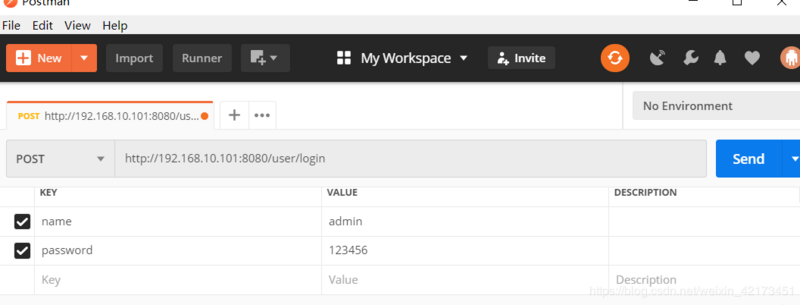
点击 Send ,得到响应如下
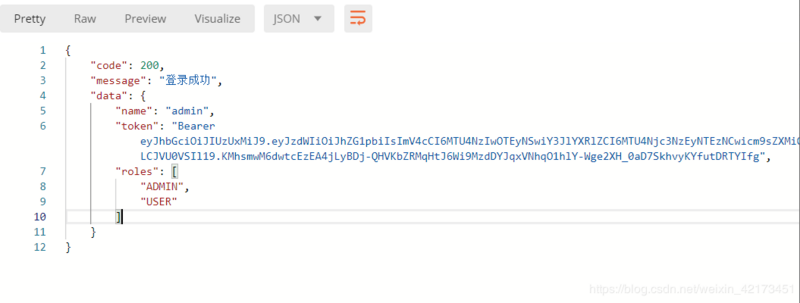
我们利用 Redis Desktop Manager 查看 redis 数据库的情况
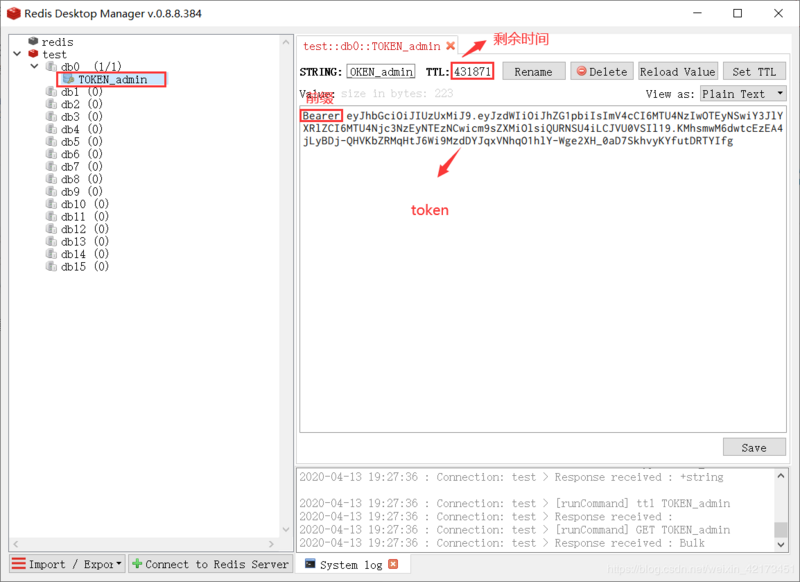
由于redis是基于内存的数据库,存取速度很快,并且有可持久化的特性,用来存储token再合适不过了。
注:博主才疏学浅,如有错误,请及时说明,谢谢。
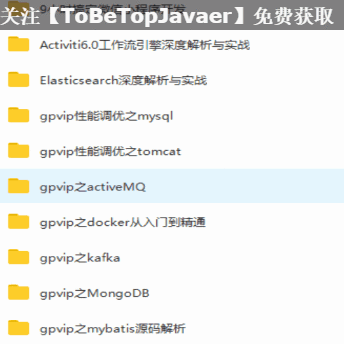
正文到此结束
- 本文标签: REST HashMap db core description bean 数据 Spring Boot root Docker schema zab ip Logging 密钥 自动生成 rmi 时间 list bus remote entity find Service UI id web json 百度 equals ACE centos plugin Ubuntu 代码 value token tab src tag tar Security 配置 Collection apache parse final ArrayList pom Word cat mapper linux IDE key springboot authenticate dist 加密 js Authorization map IO java App dependencies session maven http 数据库 业务层 redis Spring Security 测试 XML build junit https message 安全 cache spring CTO
- 版权声明: 本文为互联网转载文章,出处已在文章中说明(部分除外)。如果侵权,请联系本站长删除,谢谢。
- 本文海报: 生成海报一 生成海报二
热门推荐
相关文章
Loading...











![[HBLOG]公众号](https://www.liuhaihua.cn/img/qrcode_gzh.jpg)

